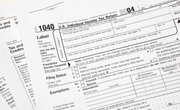
The Internal Revenue Service allows you to roll over your 401(k) plan to a traditional individual retirement account or another qualified retirement plan tax-free. However, your plan may only allow your rollover under certain circumstances. You may have heard about a 90-day rollover, but you actually have just 60 days to complete a rollover, although the IRS may waive the deadline if you missed it due to circumstances beyond your control.
401(k) Distribution Restrictions
You can’t take your money out of a 401(k), whether or not you roll it over, until you meet certain conditions, including separation from your job, reaching age 59 1/2, plan termination, financial hardship or disability. You can also qualify for a distribution if you are a reservist called to active duty for at least 180 days.
You can’t roll over money resulting from a required minimum distribution, a hardship distribution, any of a series of substantially equal payments, loans, dividends on employer securities or the cost of any life insurance policies provided by the 401(k). If you die, your beneficiaries will receive your plan assets penalty-free.
Moving the Money
If you receive a 401(k) distribution, you have 60 days to deposit it into an IRA or another qualified retirement plan (i.e., 401(k), 403(b), or 457 plans), or else the IRS will treat it as a taxable withdrawal.
Read More: What Is the Purpose of a Retirement Plan?
If you’re younger than 59 1/2, you’ll also face a 10 percent penalty if you miss the deadline, unless you qualify for an exception.
Your employer will withhold 20 percent of the distribution, even if your intention is to roll it over. If you don’t reach into your own pocket to replace the 20 percent in the rollover, the IRS will tax it.
You can avoid rollover withholding and deadlines by requesting a direct rollover, in which your 401(k) administrator moves the money directly into an IRA or another retirement plan.
Some employer plans limit incoming rollovers of money that doesn’t originate from another qualified plan. You can avoid this problem with a conduit IRA (an IRA in which you don’t add your own contributions or rollovers from another IRA). If you roll over a 401(k) to a conduit IRA, you’ll have no difficulty rolling the IRA into another employee qualified plan later.
The IRA one-rollover-per-year rule does not apply to 401(k) plans.
Read More: When You Cash Out a 401k How Many Taxes Are Due?
Rolling Over to a Roth IRA
Regardless of timing, you will have to pay taxes if you roll over your distributions from a traditional 401(k) plan to a Roth account, such as a Roth 401(k) or Roth IRA. You can avoid the 20 percent withholding if you have the money transferred through a direct rollover.
If you roll over a traditional 401(k) plan to a Roth IRA, you must include the amount in your taxable income on Form 1040. You can’t roll money from a designated Roth account to a Roth IRA during the first five years following the initial contribution.
Read More: What Does Roth Stand for in Roth IRA?
Reporting and Filing Requirements
Your 401(k) plan custodian will issue you IRS Form 1099-R in January. The form reports your plan distributions for the previous year. For rollovers completed within 60 days, it’s important to verify that the form shows the transfer code for a tax-free rollover (unless rolled into a Roth account).
For rollovers to an IRA, your IRA custodian will send you a copy of Form 5498 listing the rolled-over amount and any other contributions to your IRA.
If you roll over to a traditional IRA from a 401(k), any money on which you’ve already paid the taxes will require you to report a nondeductible contribution on IRS Form 8606. These add to your IRA’s cost basis. You don’t pay taxes on withdrawals of your cost basis.
File IRS Form 5329 if you have to pay the 10 percent penalty for an early withdrawal.
References
Writer Bio
Eric Bank is a senior business, finance and real estate writer, freelancing since 2002. He has written thousands of articles about business, finance, insurance, real estate, investing, annuities, taxes, credit repair, accounting and student loans. Eric writes articles, blogs and SEO-friendly website content for dozens of clients worldwide, including get.com, badcredit.org and valuepenguin.com. Eric holds two Master's Degrees -- in Business Administration and in Finance. His website is ericbank.com.

